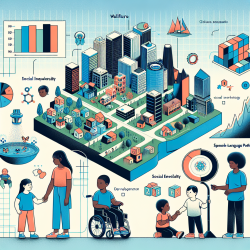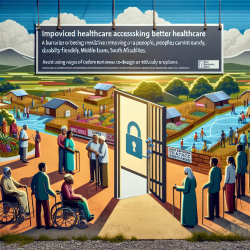Empowering Change: Understanding Early Childhood Participation in SNAP and TANF
In the realm of child development, understanding the dynamics of social welfare programs such as the Supplemental Nutrition Assistance Program (SNAP) and Temporary Assistance for Needy Families (TANF) is crucial. These programs play a significant role in supporting low-income families, particularly during the critical early childhood years. A recent study titled Below the Tip of the Iceberg: Examining Early Childhood Participation in SNAP and TANF from Birth to Age Six sheds light on the participation dynamics of these programs and their impact on children's development.
The Importance of Early Childhood Interventions
Research has consistently shown that early childhood is a critical period for cognitive and emotional development. Public investments during these years can yield significant returns in terms of child well-being and future societal contributions. However, the study highlights a gap in understanding how social welfare programs interact with children of different racial and ethnic backgrounds, as well as those living in various geographic areas.
Key Findings from the Study
- Participation Dynamics: The study found that participation in SNAP is about four times greater than in TANF during early childhood. Most children begin their connection with these programs in their birth year, with SNAP participation peaking around ages 3-4 and TANF around ages 2-3.
- Racial and Geographic Disparities: The research underscores significant racial and geographic disparities in program participation. While nearly 1 in 2 children in Virginia participated in SNAP or TANF, the cumulative receipt is 1 in 4 among White children, 1 in 2 among Hispanic children, and 3 in 4 among Black children. Additionally, participation is higher in nonmetropolitan counties compared to metropolitan ones.
Implications for Practitioners
For practitioners in speech-language pathology and related fields, these findings offer critical insights into the socio-economic contexts affecting children's development. Understanding the dynamics of SNAP and TANF participation can inform more tailored and effective interventions. Here are some ways practitioners can leverage these insights:
- Data-Driven Interventions: Use data on SNAP and TANF participation to identify at-risk children who may benefit from targeted interventions. This approach can help address developmental delays linked to socio-economic disadvantages.
- Advocacy and Policy Influence: Engage in advocacy efforts to influence policy changes that address racial and geographic disparities in program access. By highlighting the study's findings, practitioners can advocate for more equitable distribution of resources.
- Collaborative Efforts: Work collaboratively with schools and community organizations to create comprehensive support systems for children in low-income families. This can enhance the effectiveness of interventions and promote better developmental outcomes.
Encouraging Further Research
The study provides a foundation for further research into the long-term effects of early childhood participation in social welfare programs. Researchers are encouraged to explore how these programs interact with other factors, such as parental involvement and educational opportunities, to shape children's developmental trajectories.
By understanding the nuances of SNAP and TANF participation, practitioners can contribute to more informed policy decisions and improved outcomes for children. This data-driven approach not only empowers practitioners but also paves the way for a more equitable and supportive environment for all children.
To read the original research paper, please follow this link: Below the Tip of the Iceberg: Examining Early Childhood Participation in SNAP and TANF from Birth to Age Six.










